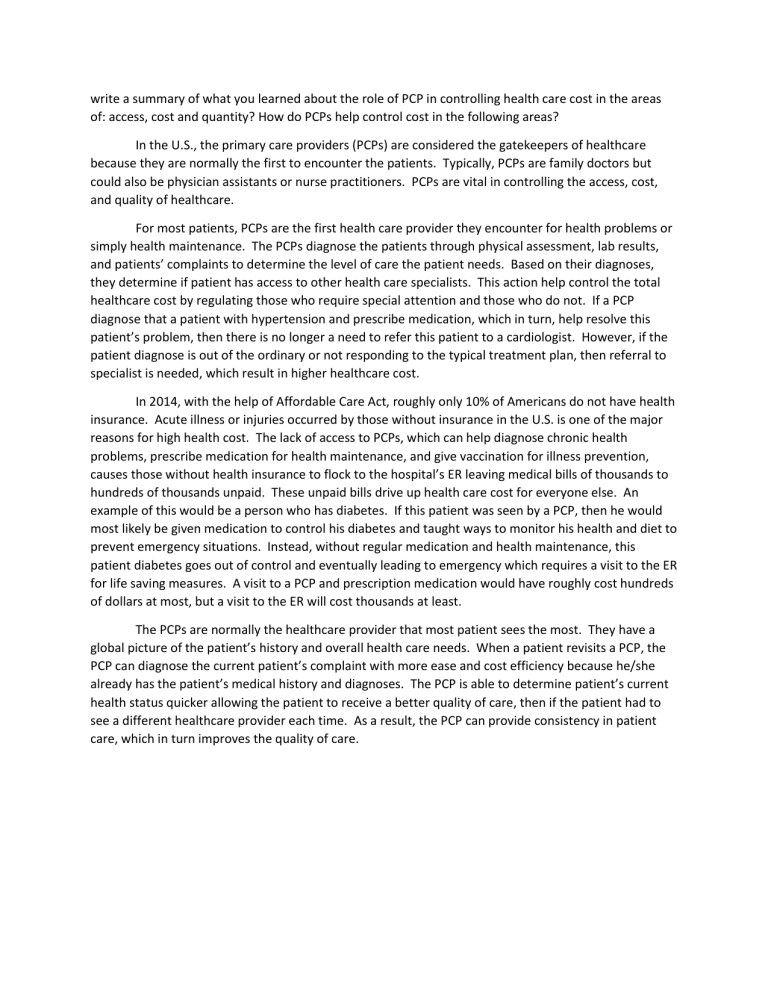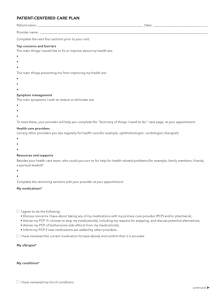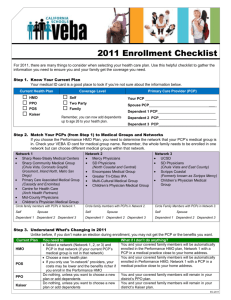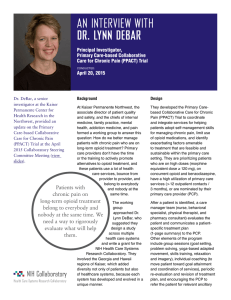
write a summary of what you learned about the role of PCP in controlling health care cost in the areas of: access, cost and quantity? How do PCPs help control cost in the following areas? In the U.S., the primary care providers (PCPs) are considered the gatekeepers of healthcare because they are normally the first to encounter the patients. Typically, PCPs are family doctors but could also be physician assistants or nurse practitioners. PCPs are vital in controlling the access, cost, and quality of healthcare. For most patients, PCPs are the first health care provider they encounter for health problems or simply health maintenance. The PCPs diagnose the patients through physical assessment, lab results, and patients’ complaints to determine the level of care the patient needs. Based on their diagnoses, they determine if patient has access to other health care specialists. This action help control the total healthcare cost by regulating those who require special attention and those who do not. If a PCP diagnose that a patient with hypertension and prescribe medication, which in turn, help resolve this patient’s problem, then there is no longer a need to refer this patient to a cardiologist. However, if the patient diagnose is out of the ordinary or not responding to the typical treatment plan, then referral to specialist is needed, which result in higher healthcare cost. In 2014, with the help of Affordable Care Act, roughly only 10% of Americans do not have health insurance. Acute illness or injuries occurred by those without insurance in the U.S. is one of the major reasons for high health cost. The lack of access to PCPs, which can help diagnose chronic health problems, prescribe medication for health maintenance, and give vaccination for illness prevention, causes those without health insurance to flock to the hospital’s ER leaving medical bills of thousands to hundreds of thousands unpaid. These unpaid bills drive up health care cost for everyone else. An example of this would be a person who has diabetes. If this patient was seen by a PCP, then he would most likely be given medication to control his diabetes and taught ways to monitor his health and diet to prevent emergency situations. Instead, without regular medication and health maintenance, this patient diabetes goes out of control and eventually leading to emergency which requires a visit to the ER for life saving measures. A visit to a PCP and prescription medication would have roughly cost hundreds of dollars at most, but a visit to the ER will cost thousands at least. The PCPs are normally the healthcare provider that most patient sees the most. They have a global picture of the patient’s history and overall health care needs. When a patient revisits a PCP, the PCP can diagnose the current patient’s complaint with more ease and cost efficiency because he/she already has the patient’s medical history and diagnoses. The PCP is able to determine patient’s current health status quicker allowing the patient to receive a better quality of care, then if the patient had to see a different healthcare provider each time. As a result, the PCP can provide consistency in patient care, which in turn improves the quality of care.



